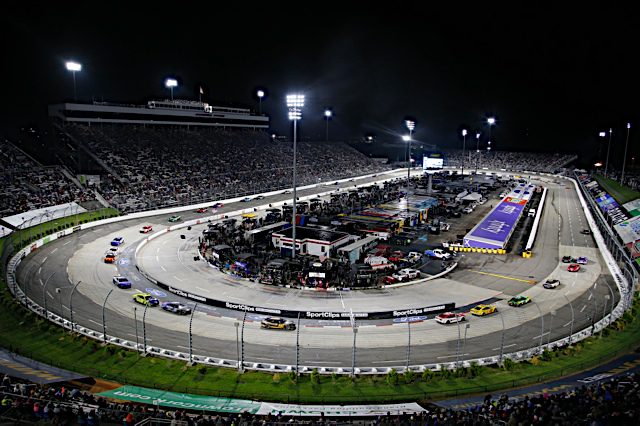Chris Buescher became the NASCAR Cup Series’ 19th different winner in 2022 with his win in last weekend’s race at Bristol Motor Speedway on Saturday night (Sept. 17). It was another unexpected winner in a season full of them. However, many in the NASCAR world felt that the race left a lot to be desired. It was yet another short track race that fell short of expectations and has been a trend on the tracks one mile or less since this new car debuted in February.
Does the Next Gen short track package need a major tweak or just a minor one going forward for the racing to dramatically improve? Amy Henderson and Stephen Stumpf debate just how much to tweak.
Hold on, there
Okay, so the racing on short tracks hasn’t been the Next Gen car’s shining moment. But before throwing everything but the kitchen sink at it, let’s look at the bigger picture.
Overall, the car has been as advertised. The racing at the intermediates has improved, sometimes dramatically, and more importantly, there’s finally real parity. The Cup Series has seen 19 different winners in 2022, and more importantly, they have come from teams that were not as competitive before simply because they didn’t have the budget of Joe Gibbs Racing or Hendrick Motorsports.
There have been some mechanical issues, but that’s not necessarily a bad thing; attrition has always been and should always be a part of the sport.
So, those short tracks. Before we go throwing the baby out with the bathwater and making wholesale changes, there’s one thing that the previous car had on short tracks that the current one does not: more horsepower. The Cup Series cars had a higher-power package at some tracks, and that went away with the Next Gen car. It’s time to bring it back and then some.
More horsepower means more throttle response and a better chance of muscling by another car in tight quarters. And there’s really no safety reason not to have more power on the short tracks.
Changing other parts of the car just for the short tracks voids a lot of the cost-cutting measures that came with the new car. Body panels were not in ready supply for most of the year; changing anything there just creates that same issue all over again — with cars that are likely to get a little banged up over the course of the race. That’s not practical and it’s not cost-effective for teams.
Having to build separate cars for four tracks (one of which, North Wilkesboro Speedway, isn’t hosting a points-paying race)…
Click Here to Read the Full Original Article at Frontstretch…

